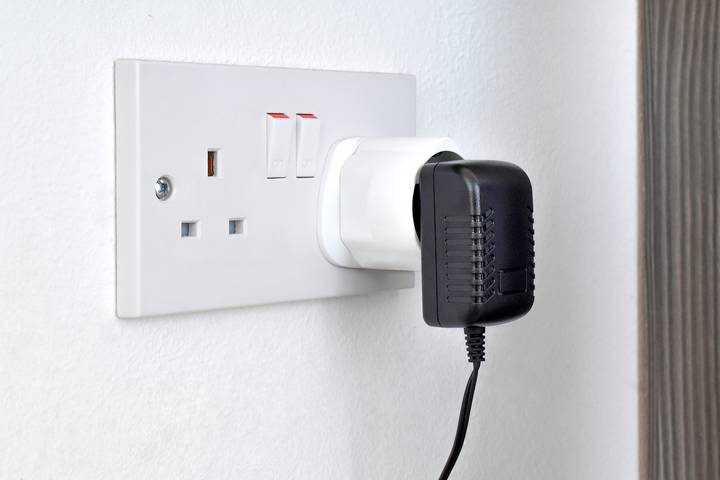Towards the end of the Victorian era in the late 19th century, homes were getting illuminated with electricity, although documentation on electricity goes back to 500 BC. Today, we enjoy all the convenience that the power grid provides and this electricity is directed into our homes through the walls and ends at an outlet.
When discussing electrical outlets, you will see the terms Amps and Volts used. Amps describe Amperage, which measures the electrical current’s volumes and strength in a circuit. Electrons flow through a conductor, in this case, an electrical wire, and produce electricity. It is measured as an electrical current or Amp. Meanwhile, Volts measure the amount of force exerted by the power source. Volts are the electrical pressure or strength of the current (amperage) that allows it to flow.
A home electrician must become familiar with the different types of outlets, which can vary based on regions. Depending on where you reside on the globe, there are different orientations of plugins. In North America, we enjoy a standard variety of outlets to serve different purposes. Here are the nine different types of electrical outlets you will most often use:
Type #1: 15 Amp 120 V Outlets

This is the most common outlet in your home and the one you must plug into for everyday devices. It has a 120-voltage supply, and the maximum current you can draw on it is 15 amps. The wire will be 14 gauge, leading to a 15 A breaker in your panel.
This standard plug will give adequate power supply for things like:
- Lamps
- Laptops
- Device charging cords
- Desktop computer and office equipment
- Small appliances
Your 15 Amp outlet with have a receptacle that is oriented with a three (sometimes only two) prong receptacle with two long vertical slots and a rounded slot underneath for grounding.
Type #2: 20 Amp 120 V Outlets

Some devices in your home need a little more juice than the standard 15 Amp outlet. They support a larger power draw with a ten gauge wire and a 20 A breaker.
Your 20 A outlet receptacle looks similar to the 15 A but has an additional horizontal slot branching off one of the verticals. The increased amperage allows you to run bigger appliances like:
- Microwaves
- Space heaters
- Small air compressor
- Toasters
- Blenders
- Air fryer
- Washing machine
- Dishwasher
Your kitchen counter may have this type of outlet for running appliances.
Type #3: 20 Amp 250 V Outlets

The next step up is a 20 V that has 250 Volts. There are three or four prongs for plugging in, requiring a double pole circuit breaker at the panel. This type of outlet is dedicated to one large appliance that will usually meet the circuit’s capacity, allowing for a higher level of power and is installed to power things like :
- Large ovens
- Electric stoves
- Dryers
- Welding equipment
- Water heaters
All houses need a few of these electrical outlets.
Type #4: 30 Amp/50 Amp 125V/250V Outlets

You can have this electrical supply installed when even more power is required to run appliances and commercial equipment. These are industrial-grade outlets not commonly found in homes but are used in shops, businesses and RVs.
Type #5: GFCI Outlets

A Ground Fault Circuit Interrupter is an outlet installed in kitchens and bathrooms with the potential for electrical shock from wet spaces. They are also commonly installed in laundry areas, crawl spaces and even outdoors. GFCI outlets monitor the current flow; if there is a leak or power surge, it will trip and shut down the outlet. You can recognize them by the reset or test button on the receptacle.
Type #6: AFCI Outlets

Similar to the GFCI outlet is the Arc Fault Circuit Interrupter, which works to deactivate the circuit through an integrated breaker when tripped. An AFCI outlet detects electrical arcing when a loose connection and electricity jumps between connections. Pests chewing on wires, an overheated appliance, or loose wires will trigger this outlet before it can spark and potentially cause a fire.
Type #7: Switched Outlets

You can get an outlet that is a unit with a socket and a connected switch. This is useful for outlets that have lamps or appliances plugged in, and rather than pulling out the cord all the time, you can turn them off with a dedicated switch. Best used for devices you always want to be plugged in.
Type #8: USB Outlets

Many devices today charge via a USB port, and it is getting more common for houses to install this type of receptacle for convenience. It is much easier than using a charging brick or connecting extra components to allow for a standard plugin to the wall, and it gives you an easy way to connect your charging cable.
These types of electrical outlets are perfect for all your devices like:
- Lap tops
- Portable gaming devices
- Smartphones
- Tablets
- Vapes
Type #9: Other Electrical Outlets

Other types of electrical outlets you can get include:
- Smart Outlets: Smart outlets can be programmed and monitor usage.
- Tamper Proof Outlets: Tamper proof outlets have a built-in barrier to restrict foreign objects.
- Rotating Outlets: Rotating outlets allow for bulky adapters to reorient and plugin.
- Weather Resistant Outlets: Weather-resistant outlets are designed with corrosive, resistant material and a protective weather cover.
Understanding the types of electrical outlets you can install in your home is important, so use this as a guide and reference when wiring up your next place.




